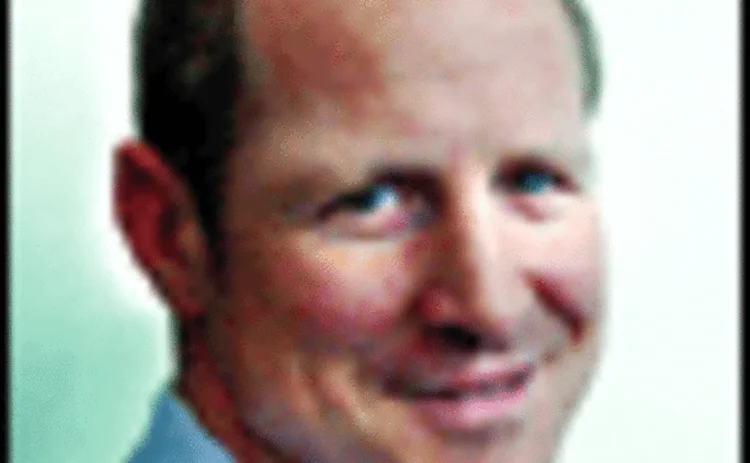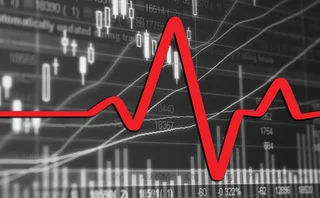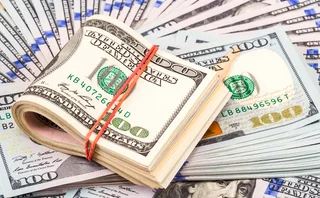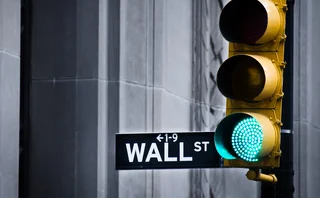
Coming of age
After a remarkable few years for the fortunes of credit default swap trading desks, the prediction that this year will see a gentle range-bound market means some are wondering how profitable these desks will be. Joanne Hart reports

Credit default swaps are a twenty-first century phenomenon. Even in the late 1990s, such products barely existed. Now a multi-billion dollar market has sprung up and CDS desks are considered an integral part of the investment banking product suite.
If 2002 is regarded as the formative year for credit default swaps, 2003 can be seen as the year in which this market came of age. Over the past 12 months, activity has been so intense that in many cases, bank CDS desks were trading more corporate bonds than the corporate bond desks themselves. One top US investment bank is said to have traded four times as many bonds on its CDS desk as on its cash desk. At other houses, the multiples are thought to be even more exaggerated.
“The positions that CDS desks take have created a need to play in the cash bond space. They routinely trade more than their cash counterparts,” says Bill Cunningham, head of credit strategy and research at financial boutique FTN Financial.
In such an environment, it is hardly surprising that certain individuals have made huge sums of money for their employers and themselves. “Twenty-five to 30-year-olds have made upwards of $100 million for their banks,” says Cunningham. Certain firms have responded to the frenzy by desperately trying to hire people with experience in this new market and packages on offer go up to several million dollars.
It is widely assumed that every bank on Wall Street and every player in the City has made a fortune out of the CDS market and there are hopes in some quarters that the party will continue into 2004. The reality, however, is rather more complex.
A mixed season
“A lot of CDS flow desks have not had a great year. They have all been short [credit exposure],” says James McNabb, global head of credit derivative trading at ABN Amro. Globally, credit default swaps referenced to single-A names have tightened by an average of 32bp to 26.5bp, and those referenced to triple-B names have moved in by an average of 48bp to 74bp according to Mark-It Partners, a provider of CDS pricing data.
“Trading has not been completely fruitful,” says a rival head trader. The problem for flow desks is that the cost of protection – and so value of protection – has fallen substantially throughout 2003 as the risk of defaults has receded.
A short position toward credit proved a boon in 2002. “In 2002, spreads widened practically month by month. Anyone with a long position [on default protection] was laughing,” says one trader. Not only were traders able to earn money on the volatile conditions and large trading volumes but they also stood to make money on the frequent spread blowouts.
However, throughout the volatility of 2002 many trading desks were net buyers of credit protection – and so short credit exposure. Anecdotal evidence suggests that desks – especially those at banks burnt by credit blowups in 2002 – were slow to be convinced by the change in credit’s fortunes and remained defensively positioned for much of early 2003. “Flow desks were long on protection. The Street bought more protection than it could sell,” says Jim Kenny, senior managing director and head of New York flow trading at Bear Stearns. This cut directly into desks’ profits while at the same time the falling cost of default protection pinched the bid-offer spread on default swaps, cutting profits on each trade.
Because next year is expected to be less volatile even than 2003 and opportunities to position the trading book for directional trades will be few and far between, some market participants suspect profits on CDS trading desks may fall. “Credit default swaps will be more widely used in 2004 but the price action around them is likely to be much lower,” says Cunningham at FTN.
“Volatility is going out of the market,” adds Rajeev Misra, global head of credit trading at Deutsche Bank. “Margins are dropping and there is less supply of credit. The challenges are growing.”
One way in which firms may try to improve their efficiency over the coming 12 months is by bringing their cash desks and derivative desks closer together.
Kenny of Bear Stearns says: “We have already seen around 20% of the Street merge their desks. There can be problems with systems and in-house politics but it is clearly a trend and it is not going to go away.” In November last year, Goldman Sachs became the first bulge bracket bank to merge its trading desks in the US. Others are expected to follow. And while Bear Stearns has not merged its trading desks, the bank has restructured across the two desks; last fall Kenny was moved from heading up the bank’s cash trading desk to take over its CDS flow trading.
Merging desks primarily relates to the way reporting lines work, ensuring that there is a single structure for both the cash bond desks and their derivative counterparts. Merging also means that banks no longer need to sustain two separate desks that effectively trade the same asset – credit. Additionally, traders suggest that those banks with merged cash and credit default swaps trading desks find it easier to remove any positioning of the books because they are not dealing with only one type of investor base.
Merged desks have already become common in Europe and the relative benefits and disadvantages are being keenly discussed in the US. “We have a merged business, not merged desks in the US. I think the situation is more prevalent in Europe only because volume in the US is so high. But it is an evolving situation being driven by people’s belief as to how to best maximize the opportunities that are out there,” says Thomas Thees, head of cash bond trading at Morgan Stanley.
“We merged our credit default swap and cash trading business in 2001 for the sake of economies of scale. Also, you really have to know one market to trade the other,” says Deutsche’s Misra. “We have not merged in the US though. The market is too big,” he admits.
Since one major US bank’s London office merged its cash and CDS trading desks, the bid-offer spreads provided for cash bonds that are actively traded in the credit default swap market have halved compared with those names not traded in the CDS market, and the liquidity in the bonds has doubled. This, according to sources at the bank, means the increase in turnover in credit – cash plus CDSs – has been three to four times greater than names not active in the market.
Consolidation
However some market observers question whether merging desks in the US is as feasible and beneficial as it has been in Europe, suggesting that merging cash and derivatives creates challenges for traders because the end investors are different for each product.
“CDS products tend to attract fast money, such as hedge funds and the like. Cash bonds are more appealing to long-term holders, such as pension funds,” says FTN’s Cunningham. “The development of the CDS market can create confusion on the buy side. It can be difficult for them to know who to deal with because sometimes the derivatives desks have more information than the cash desks.” This situation is changing however. “Long-term owners of credit are laggards but they will adapt over time,” he adds. In fact, many insurance companies have already begun to use credit default swaps for hedging purposes.
Kenny of Bear Stearns agrees. “There is already plenty of interest in the high-grade cash market from hedge funds and the traditional high-grade accounts are becoming a factor in the CDS market. As cash desks see their investor base get involved in CDS products, it will precipitate the merger of the two,” he says.
Another possible reason that is less frequently acknowledged is the CDS trading desks in the US are often part of the overall credit derivatives business, which includes the more exotic structured products. Heads of credit derivatives are not keen on one of their profit centers being carved out and becoming part of the cash business.
“A lot of banks have aligned their credit derivatives and cash businesses but there will be ongoing integration. Increasingly, people report to one head. In another 12 months, most houses will operate along similar lines. The two products are inextricably linked to one another,” says Julian Swain, responsible for credit at broking house GFI.
If the market becomes more challenging and profits become more elusive, increasing numbers of firms are bound to merge their CDS and cash bond desks. The move makes sense economically but also strategically, the perceived wisdom being that it is important for those involved in trading credit default swaps to have a knowledge of the underlying cash products and vice versa.
A force to be reckoned with
Despite the economies of scale stemming from merged CDS and cash bond desks, profits from the CDS market are unlikely to be as good in 2004 as they were in 2003, simply because expectations of default are diminishing and bid-offer spreads continue to narrow. For some houses, the decline will be aggravated by aggressive hiring at the top of the market.
The way in which CDSs are traded is also evolving. Initially, CDS activity focused on trading on behalf of clients. There is a suggestion that as the market becomes more competitive, traders will be under pressure to take proprietary positions. Many banks are increasing the amount of capital they place at risk, either through proprietary trading desks or by allowing their normal CDS traders to take more risk onto their books on a de facto basis. “Everyone takes proprietary positions,” says Misra. And while not everyone may agree with the practice (take ABN Amro’s McNabb: “I’m a bit old-fashioned. I think customers are supposed to take bets, not traders.”), it does appear to be increasing as trading profits fall.
More concerning than whether credit default swaps traders will continue to see the bumper bonuses of recent years is whether the market can continue to develop as it has done. This year is expected to be less volatile even than 2003 and have fewer defaults. As a result some market participants worry that the development of the market – which is at heart an insurance contract – may stall.
CDS traders admit there has been a fall in demand for single-name credit default swap trades. However there are several reasons why the improving credit environment should not suffocate the default swap market.
First while defaults have now fallen, corporate debt levels are still high. As FTN’s Cunningham argues: “Credit derivatives grew out of the explosion in debt during the late 1990s. It created a need for this type of product. A more leveraged environment means there is more risk around and the more risk there is, the greater the need to manage it. In some respects, credit derivatives are a natural force. They are here to stay,” he says.
Second, credit default swaps have ceased to be an insurance against default and have become a proxy for pure credit risk. And since 2004 is expected to see more balance between buyers and sellers of credit – unlike 2002 and 2003 – investors will be looking for the most effective and liquid methods of trading credit risk, which are frequently to be found in the CDS market.
And third, the use and acceptance of structured products that rely on default swaps as the underlying is increasing. Last year saw the launch of tradable credit indices that use credit default swaps as the underlying asset by both Trac-x and iBoxx. Furthermore, now that default rates are falling, investor interest in collateralized debt obligations, including those made up of CDSs, is returning. And exotic products such as first-to-default baskets are becoming more accepted by more traditional investors.
This is providing trading desks with a steady stream of demand for CDSs, although admittedly to sell protection which acerbated last year’s short positions. “Structured products more than made up for the flow desks,” says ABN Amro’s McNabb.
And so just as credit investors are wondering how they will outperform in 2004, trading desks are faced with a similar dilemma. It appears both sides of the Street will have to return to the basics of individual stock picking rather than buying or selling credit wholesale.
Only users who have a paid subscription or are part of a corporate subscription are able to print or copy content.
To access these options, along with all other subscription benefits, please contact info@risk.net or view our subscription options here: http://subscriptions.risk.net/subscribe
You are currently unable to print this content. Please contact info@risk.net to find out more.
You are currently unable to copy this content. Please contact info@risk.net to find out more.
Copyright Infopro Digital Limited. All rights reserved.
As outlined in our terms and conditions, https://www.infopro-digital.com/terms-and-conditions/subscriptions/ (point 2.4), printing is limited to a single copy.
If you would like to purchase additional rights please email info@risk.net
Copyright Infopro Digital Limited. All rights reserved.
You may share this content using our article tools. As outlined in our terms and conditions, https://www.infopro-digital.com/terms-and-conditions/subscriptions/ (clause 2.4), an Authorised User may only make one copy of the materials for their own personal use. You must also comply with the restrictions in clause 2.5.
If you would like to purchase additional rights please email info@risk.net
More on Credit markets
Liquidnet sees electronic future for grey bond trading
TP Icap’s grey market bond trading unit has more than doubled transactions in the first quarter of 2024
Single-name CDS trading bounces back
Volumes are up as Covid-driven support fuels opportunity for traders and investors
Podcast: Richard Martin on improving credit migration models
Star quant proposes a new model for predicting changes in bond ratings
CME to pass on Ice CDS administration charges
Clearing house to hike CDS index trade fees from July after Ice’s determinations committee takeover
Buy side fuels boom in single-name CDS clearing
Ice single-name CDS volumes double year on year following switch to semi-annual rolls
Ice to clear single-name bank CDSs from April 10
US participants will be able to start clearing CDSs referencing Ice clearing members
iHeart CDS saga sparks debate over credit rules
Trigger decision highlights product's weaknesses, warns Milbank’s Williams
TLAC-driven CDS index change tipped for September
UK and Swiss bank Holdco CDSs likely inclusions in next iTraxx index roll, say strategists







